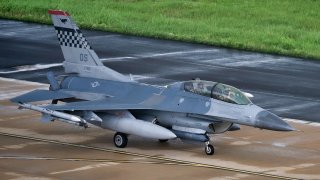Russia Hit Ukraine with a Massive Barrage of Missiles and Drones
On Monday, Russia launched a massive missile attack on Ukraine, deploying 127 missiles and 109 drones in retaliation for Ukraine's invasion of Russia's Kursk Oblast.
Summary and Key Points: On Monday, Russia launched a massive missile attack on Ukraine, deploying 127 missiles and 109 drones in retaliation for Ukraine's invasion of Russia's Kursk Oblast.
-The strikes targeted urban centers and critical infrastructure, including the Kyiv Hydroelectric Power Plant, which remains intact despite being hit.
-Ukraine successfully intercepted 201 incoming munitions with Western-supplied air defense systems.
-The attack highlights the ongoing strategic struggle, as both Russia and Ukraine continue long-range strikes. However, Ukraine's offensive potential is limited by Western policy restrictions, despite the heavy toll of the conflict.
Russia’s Massive Missile Strike on Ukraine: What You Need to Know
On Monday, the Russian military launched a missile attack against Ukraine with hundreds of ballistic missiles, cruise missiles, and suicide drones.
The attack came in response to Ukraine’s invasion of Russia’s Kursk Oblast, which has publicly humiliated Russian President Vladimir Putin and discredited his military.
The Russian military launched a total of 127 missiles and 109 drones. The Russian munitions targeted a wide range of urban centers and critical infrastructure. Perhaps the most significant target was the Kyiv Hydroelectric Power Plant, a dam just north of Kyiv that holds almost 4 billion tons of water. Although the dam was struck, it still holds. Should it break, millions of Ukrainians in and around Kyiv would be exposed.
According to Kyiv, Ukrainian forces managed to shoot down 201 of the incoming munitions by using air defense systems provided by the West, including MIM-104 Patriot, NASAMS, and IRIS-T air defense batteries.
“Imagery from 14 August 2024 confirmed the destruction of one Orion UAV [unmanned aerial system]. The collocated MiG-29 FULCRUM fighter aircraft and second Orion UAV may have been damaged during the attack,” British Military Intelligence assessed in its latest estimate of the war.
The Russian military has relied a lot on both the MiG-29 Fulcrum and the Orion. The Orion in particular has been used in a variety of roles, including kinetic strikes and reconnaissance. The Russian defense and aerospace industry still relies on foreign parts and technology to fuel production of these munitions, despite attempts by the international community to limit Russian access to the global market.
“Introduced by the Russian Military in 2020, the Orion is a long-range, medium altitude UAV. It is primarily utilized as an intelligence, surveillance and reconnaissance platform, although it can be equipped with guided munitions,” British Military Intelligence added.
But the Ukrainian military has had its own success with long-range munitions. Indeed, Ukraine continues to target and destroy Russian military facilities within Russia.
Ukrainian Long-Range Attacks
The Ukrainian military has been targeting Russian air bases and other high-value military targets in occupied Ukraine and Russia. The goal is to curb the Russian military’s ability to wage war effectively and lessen the pressure along the contact line in Ukraine.
However, the Ukrainian military is being restricted from its full potential due to policy considerations in Washington and European capitals. For example, Ukrainian forces can’t use all of the weapon systems and munitions, including some of the most effective like the MGM-140 Army Tactical Missile System short-range ballistic missile, because of the fear of causing an escalation.
After more than 900 days of brutal fighting and dozens of long-range attacks against Ukrainian cities and critical infrastructure that have killed and wounded thousands of innocent people, the fear of escalation shouldn’t be as high as it still is.
About the Author
Stavros Atlamazoglou is a seasoned defense journalist specializing in special operations and a Hellenic Army veteran (national service with the 575th Marine Battalion and Army HQ). He holds a BA from the Johns Hopkins University and an MA from the Johns Hopkins’ School of Advanced International Studies (SAIS). His work has been featured in Business Insider, Sandboxx, and SOFREP.
Image Credit: Creative Commons.


